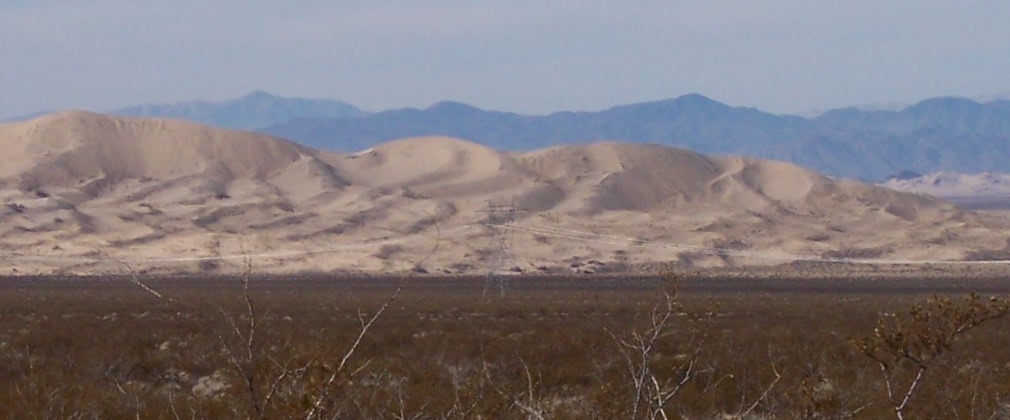Alternative mountain formation
Those who travel the southwestern United States can gain an insight into its geology because the lack of vegetation allows a clear view of rocks and structures. One of the unique possibilities is to observe the association of sand dunes with mountains. One of many examples is shown here, which demonstrates the close spatial relationship between dunes and mountains.
Is it therefore conceivable that at least some of the mountains of the west coast of the United States are gigantic dunes that were petrified? The process of fossilization is associated with a reduction in volume. It generates sharper and narrower contours, a kind of shrinkage.
How could the process of fossilization be imagined? A dune of loose conglomerate can not simply sink into the earth, be transformed by penetrating liquid magma, and come back to the surface as rock, while the typical dune structure and shape is maintained. The process of fossilization must therefore take place at the surface and it must happen quickly. This is where electricity comes into play. On one hand there is the possibility of melting and solidification, when electricity is introduced through the top of the mountain. On the other hand, it may be a direct electrical conversion. Experiments [Steinbacher 2011, 586] have shown that it is entirely possible to transform dust and soil electrically into different types of rocks. The process first melts the material mixture. Then crystals of different size and composition form. Upon further exposure to electricity, they begin to melt itself. Essential parameters are the composition of the material, current and voltage, and the exposure time.
Is it even possible that a process could have worked like this in nature itself? An interesting insight hereto is provided by mountains and valleys near Whitewater north of Palm Springs. Here structures can be found that combine loose conglomerate with so-called weathered granite.Next: External granite
Literature
Steinbacher, Michael (2011): A new Approach to Mountain Formation; in Proceedings of the Natural Philosophy Alliance. 18th Annual Conference of the NPA, 6 – 9 July 2011 at the University of Maryland, College Park, USA; Mt. Airy, 584-590
 Print This Page
Print This Page

![eugeology05 Electrically created “Granite” [Steinbacher 2011, 586]](http://www.eu-geology.com/wp-content/uploads/eugeology05-1024x682.jpg)